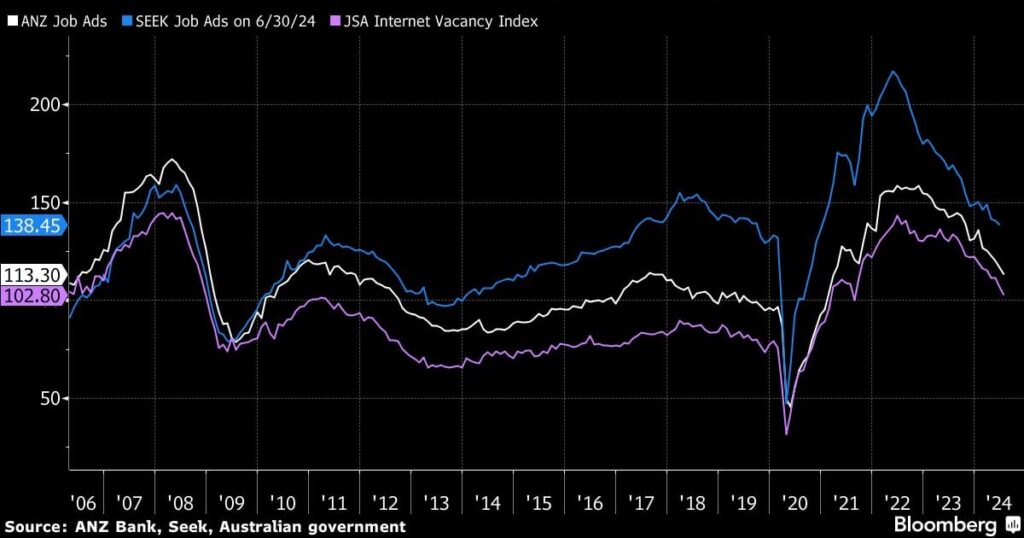Australia’s job growth exceeded expectations in July, with a significant increase in employment driven by full-time positions, according to government data released on Thursday. Despite the increase in employment, the unemployment rate in Australia rose slightly to 4.2% as the labor force participation rate reached a record high of 67.1%.
The positive employment data led to a reversal of earlier declines in the Australian dollar and yields on three-year bonds, as traders adjusted their expectations for Reserve Bank rate cuts. Market analysts suggest that the Reserve Bank of Australia may delay any potential interest rate hikes, given the recent uptick in unemployment and subdued inflation.
The strong participation rate and high employment-to-population ratio indicate a robust labor market in Australia, with employment growth outpacing population growth. The Australian Bureau of Statistics reported that the annual job growth rate remained steady at 3.2% in July.
Moreover, key highlights from the report show that full-time roles increased by 60,500, while part-time roles declined by 2,300. The employment-to-population ratio also rose to 64.3%, and monthly hours worked increased by 0.4%. Despite these positive trends, the underutilization rate in the labor market saw a slight uptick to 10.6%, while underemployment decreased to 6.3%.
Market analysts continue to debate whether the Reserve Bank of Australia will prioritize the strong employment figures or the rising unemployment rate in their monetary policy decisions. However, the overall consensus is that the recent labor force figures are unlikely to significantly influence the Reserve Bank’s stance. The Reserve Bank is expected to maintain its current interest rate settings at the upcoming meeting in September based on the latest economic data.
The Reserve Bank of Australia, which follows a dual mandate of price stability and full employment, has reiterated its commitment to supporting robust job growth post the Covid-19 pandemic while managing inflation. Governor Michele Bullock is scheduled to provide further insights on the employment data and other economic issues at a parliamentary hearing on Friday.
The Reserve Bank’s next monetary policy meeting is scheduled for September 23-24, where policymakers are anticipated to keep interest rates unchanged for the seventh consecutive meeting. Market participants remain cautious about the potential timing of any future rate cuts, with the majority expecting no changes in interest rates until 2025.
Overall, the strong employment figures in Australia highlight the resilience of the labor market amid challenges such as interest rate hikes and inflation concerns. Despite some upward pressure on the unemployment rate, the Australian economy continues to demonstrate strong job creation and labor market participation, supporting the overall economic recovery post the pandemic.


